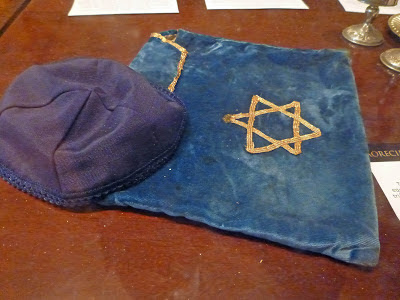We found it pretty easy to get around and Tom wandered over to see the ocean beaches which were loaded with bodies but the brown water and fear of sharks kept most on the beach.
My Spanish was good enough to
find this guy on the street to fix my favorite pair of leather croc flip flops. It took about 35 minutes and with extra
leather, heavy stitching and liberal amounts of glue, I have a feeling that
this shoe will outlast its pair…cost about $5.00 US.
Recife Antigo
(“Old Recife”) is how it´s called; the historic center of the city. The town
grew around the port and, after the arrival of Mauricio de Nassau to
Pernambuco, in 1637, it started to have more urban characteristics (Pernambuco
was dominated by Holland from 1637 until 1654; it´s a chapter of Brazilian
history known as “the dutch invasion”).
The region of the port is known as “Marco Zero”. It´s considered the landmark of the foundation of the city. In the 80´s, Old Recife entered a period of decay and the rich architectural inheritance deteriorated. There´s been some efforts to recover it since the 90´s and many old buildings have already been restored, such as the old stock exchange building and the old houses of Rua Aurora.
We headed to the
main street, Rua Bom Jesus, late Sunday afternoon for the huge, busting street
market, with crafts, food, music..... and caipirinhas.
It seems that around every corner there was a
group of 10 to 20 drummers practicing and competing with each other.
The Caipirinha is Brazil's
national cocktail, made with cachaça (sugar cane hard liquor), sugar and lime.
Cachaça is Brazil's most common distilled alcoholic beverage. Both rum and cachaça are made from sugarcane-derived
products. Specifically with cachaça, the alcohol results from the fermentation
of sugarcane juice that is afterwards distilled whereas rum originates from
molasses.
We enjoyed several Caipirinhas, a few cold Brazilian
beers and some street food.
The same street is
home to the oldest synagogue in the Americas.
Many of the original masonry walls were left uncovered and devout Jews
come to reflect and leave small notes to friends lost.
Our time in Recife
was good, but the Marina was expensive for the services provided and we were
anxious to catch up with our friends on Lovina that had just arrived in Jacare…only
70 miles to the north.
Tom




















3 comments:
Loved the colors of your last report..I could even literally *smell* the place!
Moging up North, you'll be passing within 150 mile of the ISland of Fernando de Noronha, an often ignored treasure in the S. Atlanti fantastic anchorages and incredibly pristine underwater landscapes and wildlife.
Although authorizations/supervision are needed it is defintely worth the detour!
Jack,
Thanks for your compliment on the post. Unfortunately, the officials at Fernando de Noronha have decided they do not want cruisers. They have imposed huge fees for visiting boats and most cruiser friends I know have decided not to visit there. They charge large daily fees for the boat and for each crew member. There are many nicer islands in the world that realize that visiting boaters bring money to spend on food, drink and tourism and lend an international aspect to their culture. We will especially enjoy Tobago, where there is abundant wildlife above and below the water, cheap diesel fuel and welcoming officials!
Tom
Too bad about Noronha!
I agree with you it is a big mistake in judgment to believe that charging indecent fees will keep the place pristine!
They will only get the big multi-millionnaire's yachts who are creating a much bigger environmental penalty than a 46 Nordie with three smart people on board.
Too bad for them!
Have fun anyway...I continue to follow your adventures with interest!
Cheers
Jack
Post a Comment